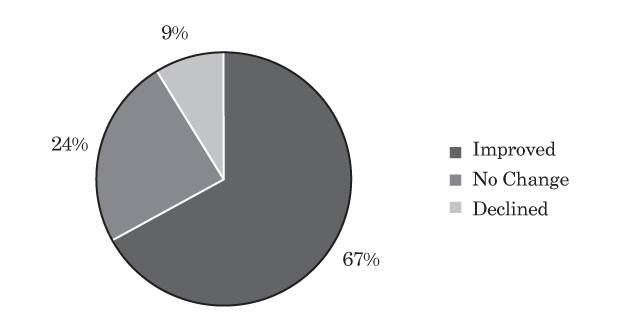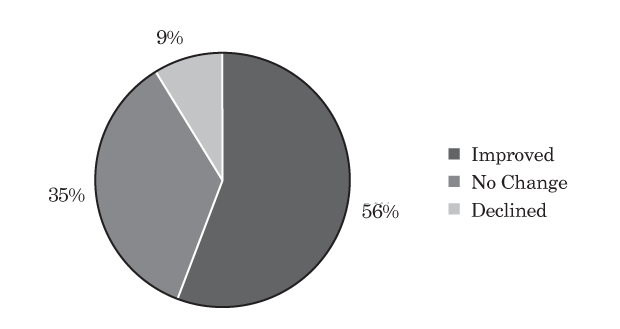Quality Afterschool Programs Supported by the 21st Century Community Learning Centers Are Part of Equation for Education Success in Wisconsin
Each year the Wisconsin Department of Public Instruction (DPI) recognizes schools with low socioeconomic student populations that achieve high rates of proficiency on the Wisconsin Knowledge and Concepts Exam (WKCE) with the Wisconsin School of Recognition award. Many of the schools served by 21st Century Community Learning Centers programs have gone on to receive this prestigious acknowledgement of high achieving school environments, aided by the support the afterschool program provides. This illustrates the importance of the enriched learning environments afterschool programs provide students, particularly students in need of additional learning opportunities.
During the 2009–10 school year, 21st Century Community Learning Centers in Wisconsin served over 47,219 youth attending 188 high-poverty schools. These programs provide academic support and enrichment in core subject areas, such as mathematics and reading, as well as a wide array of youth development opportunities that are otherwise limited during regular school hours. Examples of activities include, but are not limited to, recreation (88%), science (88%), arts (85%), cultural studies (82%), technology (60%), tutoring (46%), leadership development (37%), drug prevention (33%), mentoring (19%), and much more. On average, Wisconsin programs added 495 hours of activities, an equivalent of 74 school days to students’ learning time.
Annual performance data revealed that among regular attendees at 21st Century Community Learning Centers, 67% improved their academic performance.
Annual performance data revealed that among regular attendees at 21st Century Community Learning Centers, 67% improved their academic performance (see Figure 1), and 62% increased their classroom participation (as reported by teachers). Teachers also reported that many more students were motivated to learn (see Figure 2).
Figure 1. Improvement in academic performance.

Figure 2. Improvement in coming to school motivated to learn.

Clearly, students who are engaged in learning hold more promise for success in and outside of the school day. However, these programs do not do it on their own.
In 2009–10, there were 968 community-based partners that contributed to the success of the 21st Century Community Learning Centers. In addition to services, these partners contributed over $3.4 million to support programs. This support is all that much more important as these 21st Community Learning Centers face uncertain future funding and our public schools are challenged to do more with less. Schools in Wisconsin provide some of the best educational experiences in the country, and yet the academic gap is still too wide.
It is for these reasons that our agency will not choose to pursue flexibility for the alternative use of 21st Century Community Learning Centers funds and instead commit ourselves to strengthening the afterschool programs. With the support of high quality learning opportunities before, during, and after school, youth can realize their potential with the skills to be successful 21st century citizens.
Our students continue to learn well beyond the time limits of the school day and year. Supporting and encouraging them to reach their full academic potential requires us to consider additional avenues for providing instructional opportunities. High quality afterschool, before-school, and summer programs will help us achieve the goal of having all children graduate with the knowledge and skills necessary for postsecondary success in college and careers.
Milwaukee Students Find a Space to Grow in Boys & Girls Clubs
When the school day ends in the city of Milwaukee, thousands of students flock to the 38 local Boys & Girls Clubs for a range of learning opportunities that take them out into the community and deeper into their studies. Milwaukee struggles with some of the highest rates of teen pregnancy, academic underachievement, and childhood poverty rates in the country, but thanks to the Club’s focus on academics, members of all ages are seeing important improvements.
For example, the SPARK Early Literacy Initiative, a U.S. Department of Education—Investing in Innovation (i3) Fund recipient program, helps students through grade 3 with their reading proficiency. A UW-Madison randomized-control design study has demonstrated that regularly attending participants demonstrate 35% more literacy growth on the Measures of Academic Progress (MAP) assessment. Meanwhile, the Stein Scholars program helps high schoolers meet the academic demands for graduation and college admission and provides scholarship support for more than 45 graduates annually.
Working with more than 200 organizations in the community, the clubs offer a wide range of other learning opportunities for members—from on-the-job training through the Milwaukee Area Workforce Investment Board to civic engagement projects where members help to beautify their neighborhoods and promote safety in the community.


